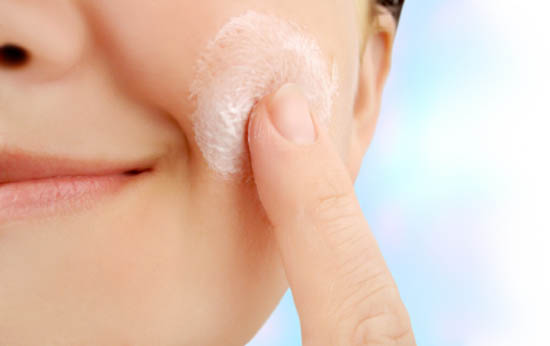
Trying to correctly determine your skin type can sometimes seem as complex as trying to work out if we've seen the last of Jon Snow in 'Game of Thrones'. It can all be a bit confusing and our heads are turned with the latest popular theory. We click our tongues and say 'yes, that's the key!' but end up so bewildered that we become convinced there's some kind of magic involved.
So today we're going to demystify the process of understanding your skin type (I'm afraid that we can't comment on Jon Snow; we're thinking of him as Schrödinger's Kit).
Understanding your skin type really is one of the building blocks of great skin because it means you can choose the right skincare products for you.
Some of us may find it hard to pin down what our skin type actually is because while our skin type remains consistent, the skin itself can change over time due to stress, hormones, environmental factors, weather conditions, products used and sometimes from diet and sleep deprivation too.

Before we delve into the four main skin types in detail, it's important to understand that the key factor to consider here is your skin's oil content as it's the true factor in determining skin type. Sebum helps to protect the skin from environmental factors, and decreased levels of sebum can contribute to skin dryness. Oil content influences shine and pore size, and oily skin can be prone to imperfections.
And it's important to understand that water content and sensitivity are actually only features of the skin but they can trick you into thinking you have different skin types. So how do these two elements affect the appearance of the skin?
Water influences and affects elasticity, softness and suppleness. This basically means that skin is like a rubber band; when it's stretched, it should return more easily back to its original shape. Any skin type can become dehydrated (i.e. a feature of the skin caused by lack of water) but dry skin (one of the four main skin types which we'll discuss later) is actually because of the skin’s inability to produce sufficient or good quality sebum (oil content).
Sensitivity can occur with any skin type and the result can be itchy, stinging skin that's prone to imperfections and can have a tendency to break out when exposed to certain substances or environmental factors.

But when it comes to pinpointing specific skin types, how are they classified and how do you know which type you fall into?
Broadly speaking, there are four common skin types - oily, normal, dry and combination.
And our guide below shows you exactly what you should be looking out for to understand yours:
Advertised
- Oily: enlarged pores, excess shine, make-up slides easily, regular blemishes, dull complexion
- Normal: clear, few blemishes, no sheen, smooth, supple, no flakes
- Dry: uncomfortable, tight, rough to touch, visible flaking, always feels dry and tight, dry patches, redness, itchiness and loves really nourishing textures
- Combination: this can be either a) oily t-zone with normal cheeks where we find a shiny t-zone, possible clogged pores, dull appearance or b) normal t-zone with oily cheeks where we find possible clogged pores and blemishes around cheeks and jawline, make-up sliding from the cheeks, normal t-zone area

If you've pondered the guide above and you still aren't 100% sure which skin type you are the proud owner of, worry not for we've a handy test to help you out. It's called the blotting test and it's a dab hand at helping you determine your skin type.
- Wash your face and pat dry
- Leave your face alone for three hours without putting any product whatsoever on (this means no moisturiser, no make up, nothing at all). This allows you to see how much oil the skin naturally produces
- Using oil-blotting paper, dab each area of the face
- Check the paper to see how much oily residue it leaves and compare it to our descriptions above; you'll see that there may be no oil residue in some areas and lots in others
Caring for your skin starts with understanding your skin type. Now that you're armed with that info, the next step is to ensure that you're choosing the right skincare products for you.
Advertised
So tell us, what's your skin type? Did you find it easy to determine? And if you've tried the blotting test, we'd love to hear how you got on.
Brought to you by La Roche-Posay, committed to a better life for sensitive skin and recommended by over 25,000 dermatologists worldwide. Find out more about which products are right for your skin type at http://www.laroche-posay.ie/



